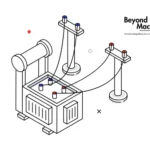Overview
Earthing systems play a crucial role in ensuring electrical safety, and their significance is underlined by the Indian Electricity Rules, 1956. These rules provide a framework to regulate electrical installations and ensure the protection of life and property. In this blog, we will delve into the essentials of earth pits, earthing systems, and related concepts as outlined in the Indian Electricity Rules, 1956. We’ll also explore how these systems contribute to safety and compliance.
What is Earthing?
Earthing refers to the process of transferring the immediate discharge of electrical energy directly to the earth using a low-resistance wire. It ensures that electrical faults do not lead to hazardous conditions. The earthing system includes:
Earth electrodes or earth pits
Conductors connecting the installation to the earth
Protective devices that ensure the safety of people and equipment
IE Rules :
Importance of Earthing Systems in Electrical Safety
Earthing systems play a vital role in safeguarding life and property. They prevent electric shocks, reduce the risk of fire, and ensure the effective operation of protective devices. The Indian Electricity Rules, 1956, outline detailed provisions to achieve these objectives.
Earthing refers to the process of transferring the immediate discharge of electrical energy directly to the earth using a low-resistance wire. It ensures that electrical faults do not lead to hazardous conditions. The earthing system includes:
Earth electrodes or earth pits
Conductors connecting the installation to the earth
Protective devices that ensure the safety of people and equipment
Indian Electricity Rules, 1956
1. General Earthing Requirements
Conducting Objects: Every conducting object, other than current-carrying parts, must be effectively earthed.
Earthing Lead Dimensions: Minimum sizes for earthing leads are specified as 50 sq. mm for copper and 75 sq. mm for aluminum.
Continuity: Earth continuity within premises must be maintained and tested periodically.
2. Specific Rules for Earth Pits
Earth pits must have a resistance of not more than 5 ohms and should be maintained consistently.
Two separate and distinct earth electrodes are required for installations such as public lighting systems.
3. Neutral Conductor Earthing
In three-phase, four-wire systems, the neutral conductor must be earthed using two separate and distinct connections with a minimum of two earthing electrodes.
This reduces the overall earthing resistance to an acceptable low value.
4. High Voltage and Medium Voltage Systems
Rule 53: High voltage installations require two earth electrodes, separated by at least 6 meters.
Rule 52(2): Medium voltage installations must have two independent earth electrodes.
5. Earthing of Equipment and Metal Parts
Stationary and Portable Equipment: Frames of motors, transformers, generators, and metallic parts of controlling apparatus must have two distinct earthing connections.
Metal Castings and Covers: All metal coverings protecting electrical lines or equipment must be earthed unless classified as Class II appliances.
Types of Earthing Systems
Read our articles:
What is harmonics and how to reduce harmonics
In an ideal electrical system, the current and voltage waveforms are perfectly sinusoidal. However, when the waveform deviates due to additional frequencies that are integer multiples of the fundamental frequency (e.g., 50 Hz or 60 Hz), these are known as harmonics.
Maintaining and Testing Earthing Systems
Periodic testing of earthing resistance is essential to ensure compliance with the 5-ohm resistance requirement.
Interconnection of earth electrodes can further reduce resistance.
No impedance, circuit breaker, or cut-out should interrupt the earthing system.
Benefits of Effective Earthing
- Human Safety: Protects against electric shocks.
Equipment Protection: Prevents damage from overvoltage or lightning.
System Reliability: Enhances the performance of protective devices like circuit breakers.
Regulatory Compliance: Adherence to the Indian Electricity Rules, 1956, avoids legal penalties and ensures operational safety.
Conclusion
Equipment Protection: Prevents damage from overvoltage or lightning.
System Reliability: Enhances the performance of protective devices like circuit breakers.
Regulatory Compliance: Adherence to the Indian Electricity Rules, 1956, avoids legal penalties and ensures operational safety.








